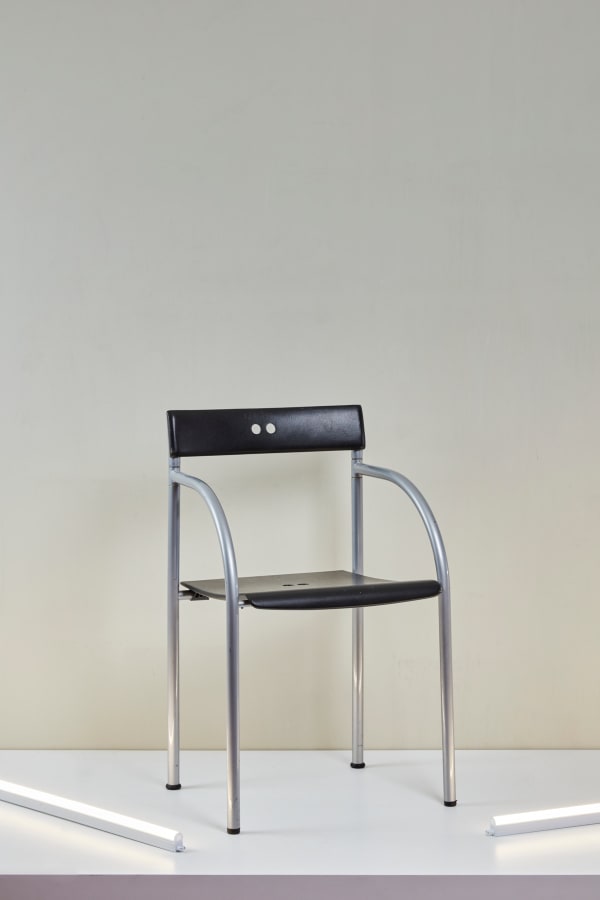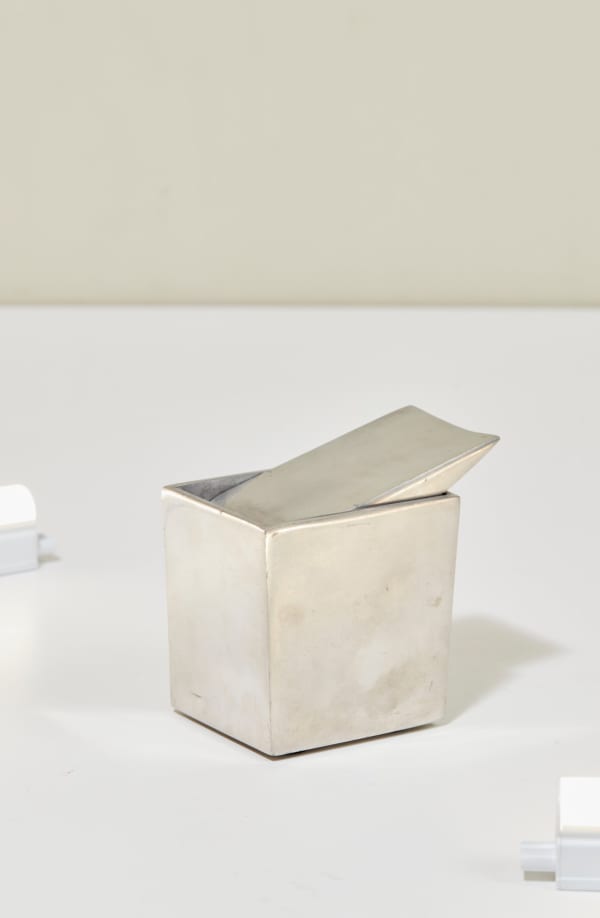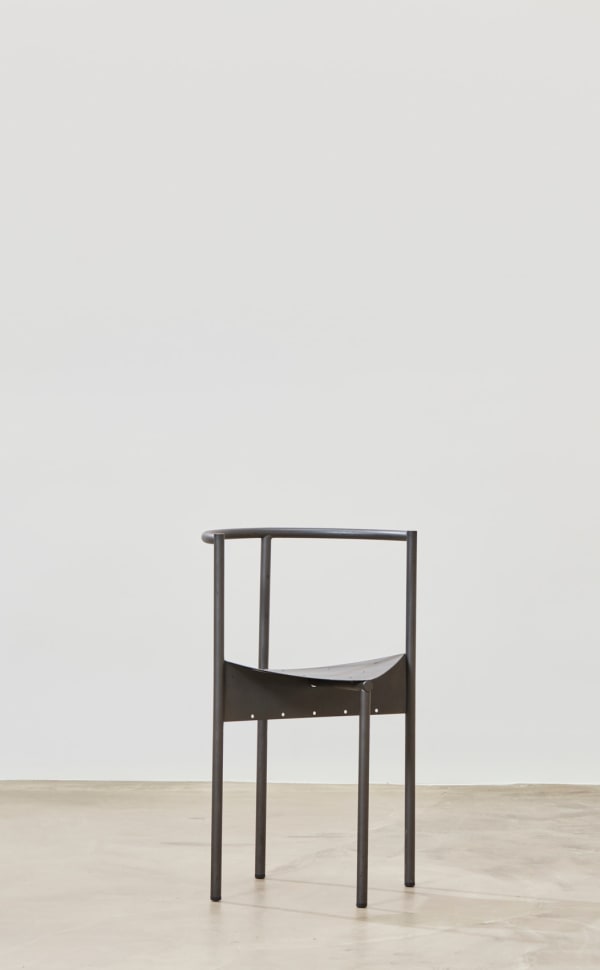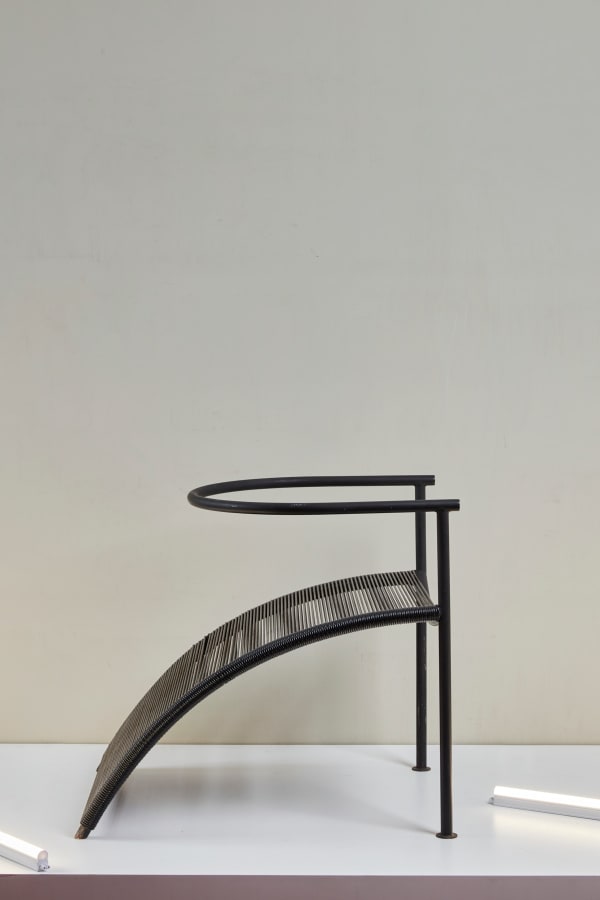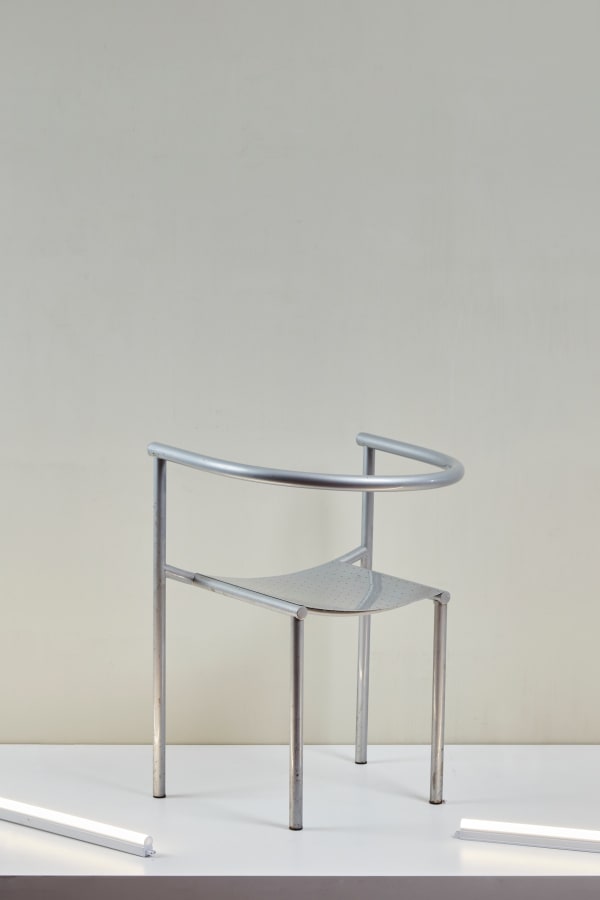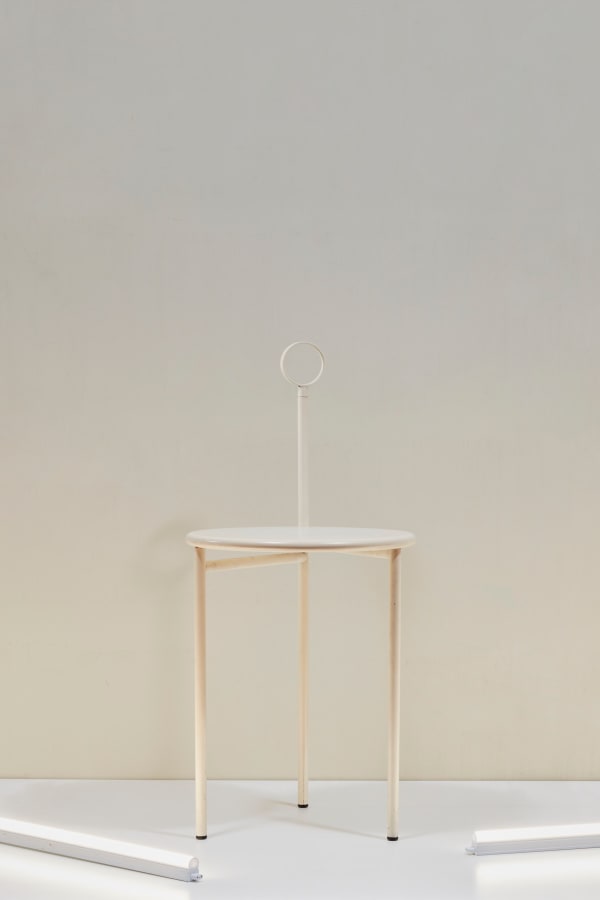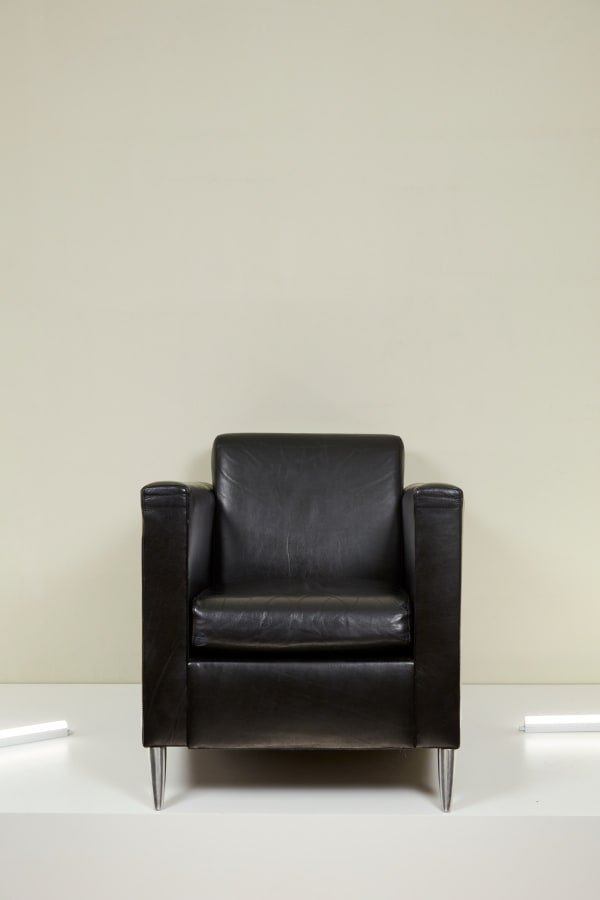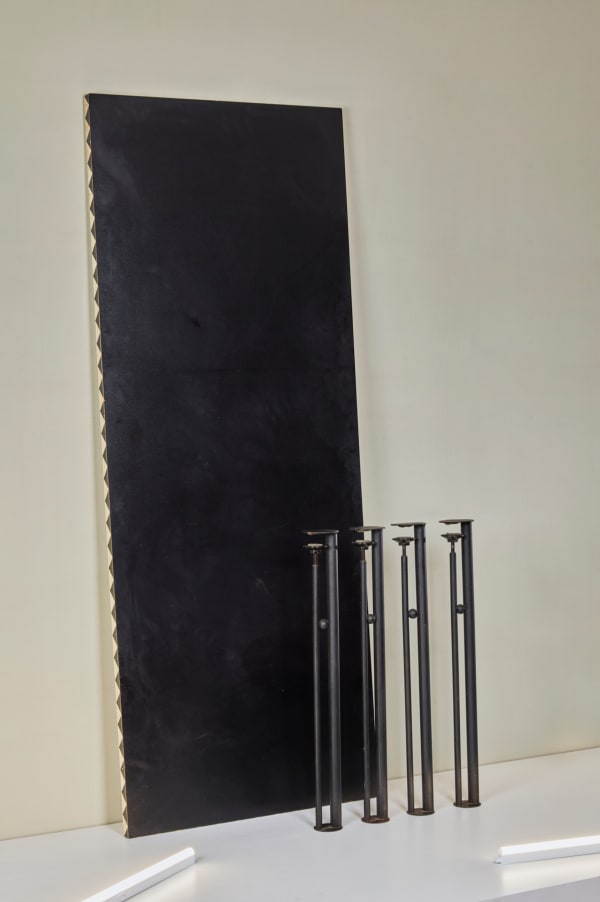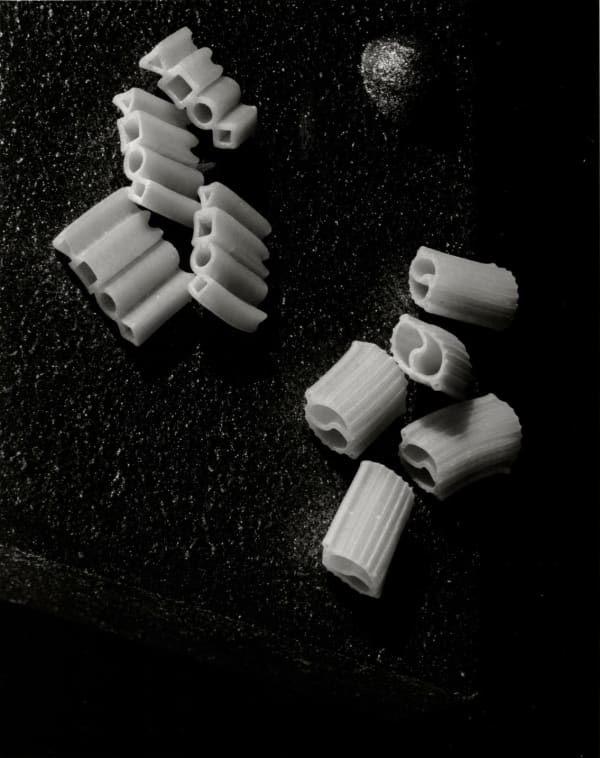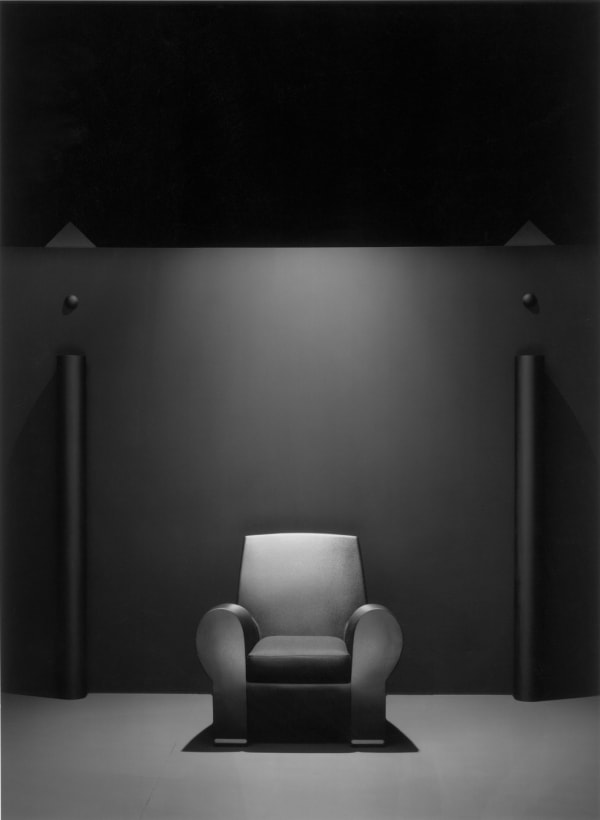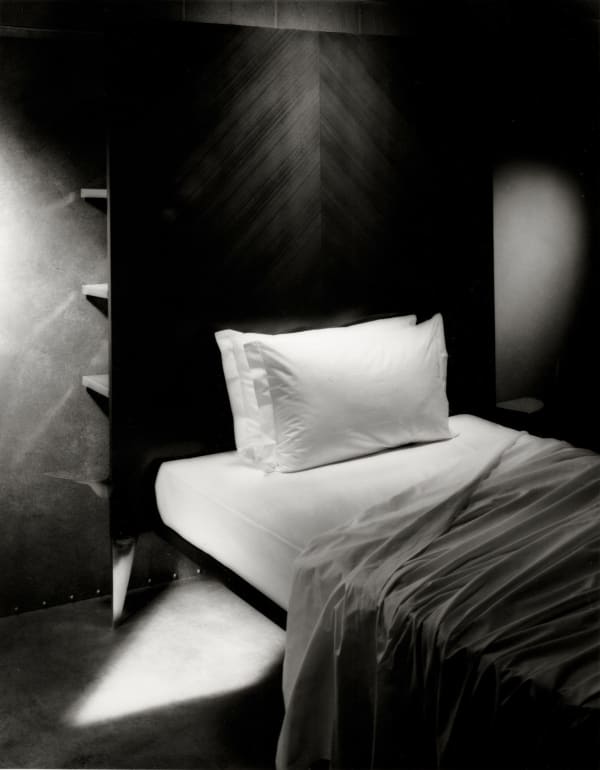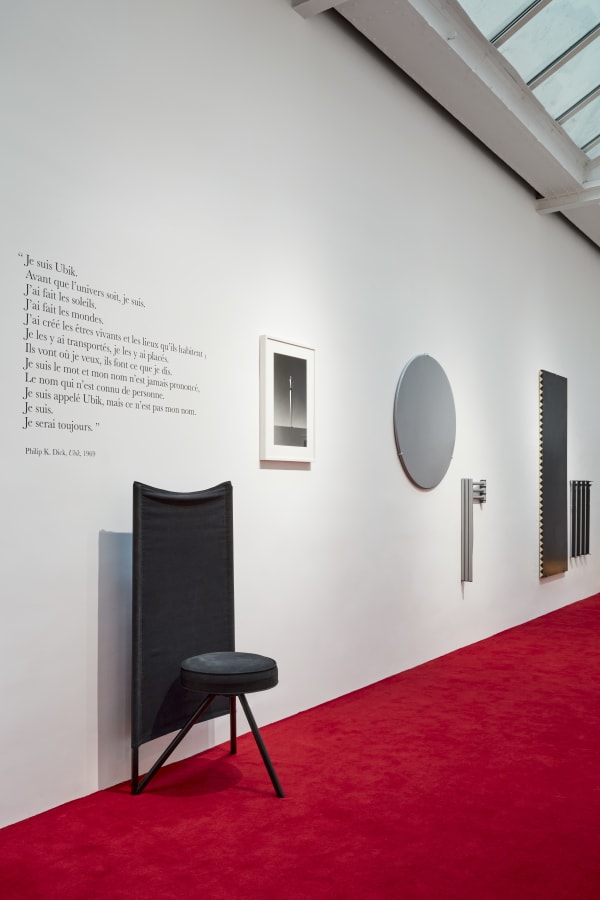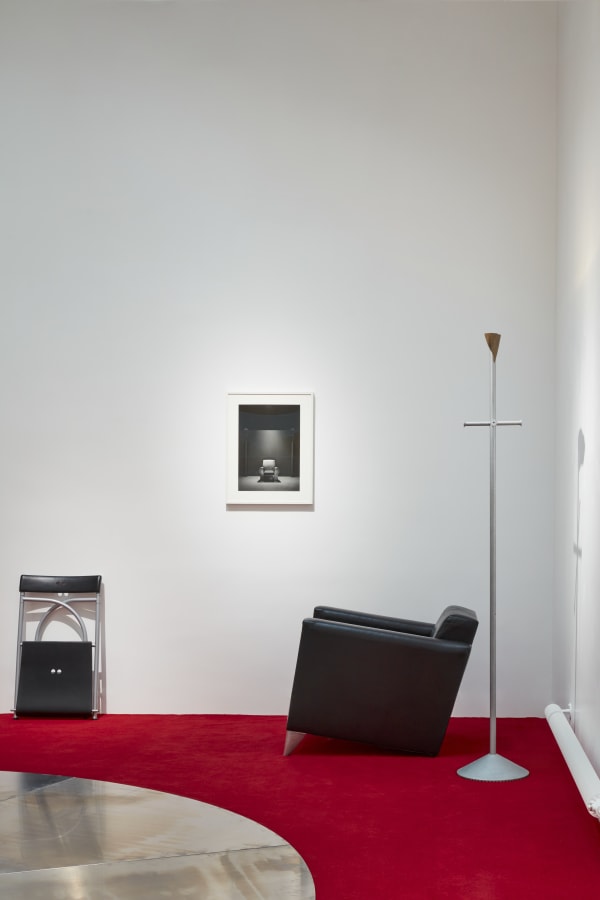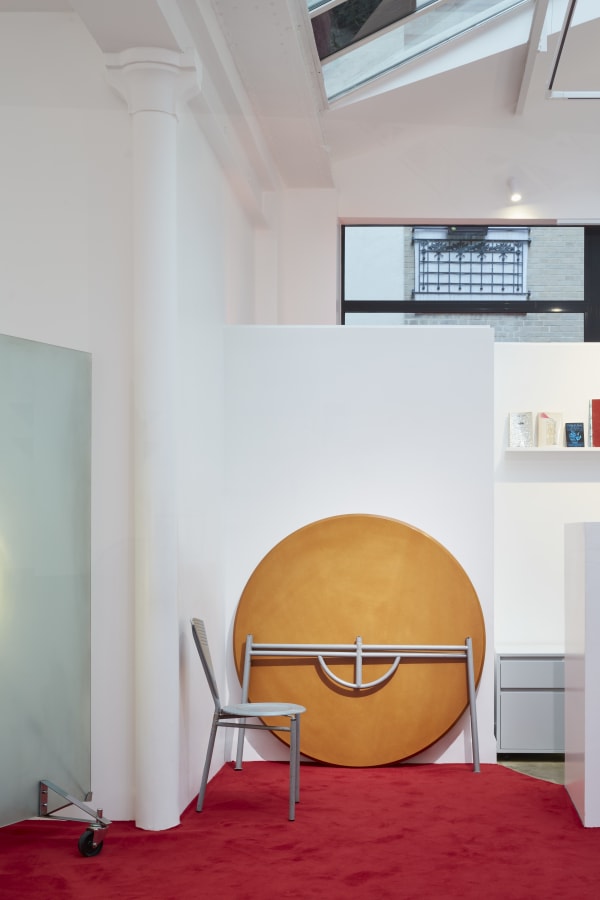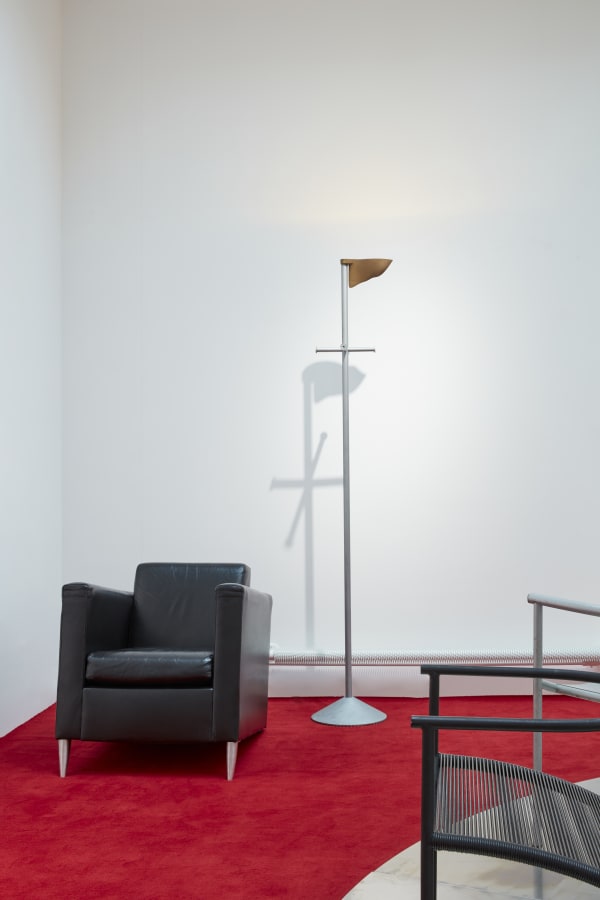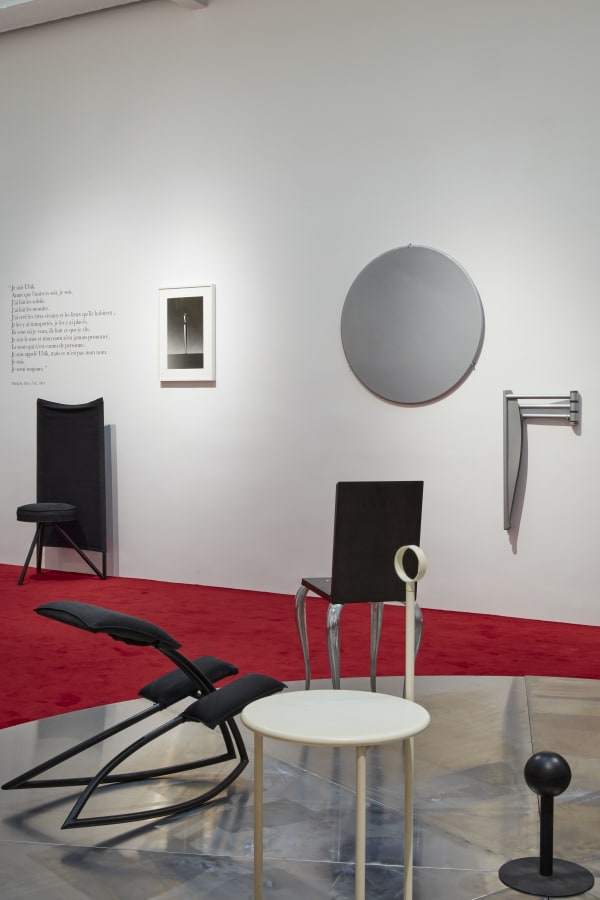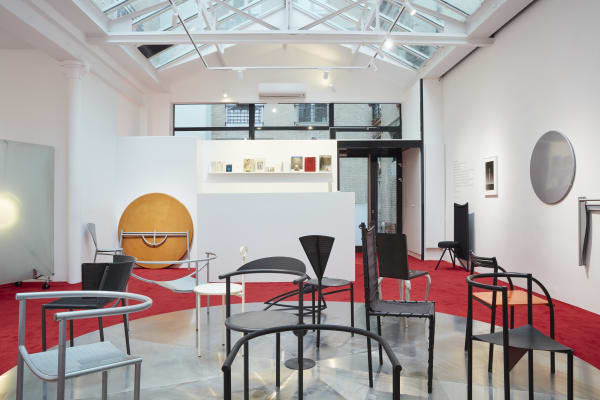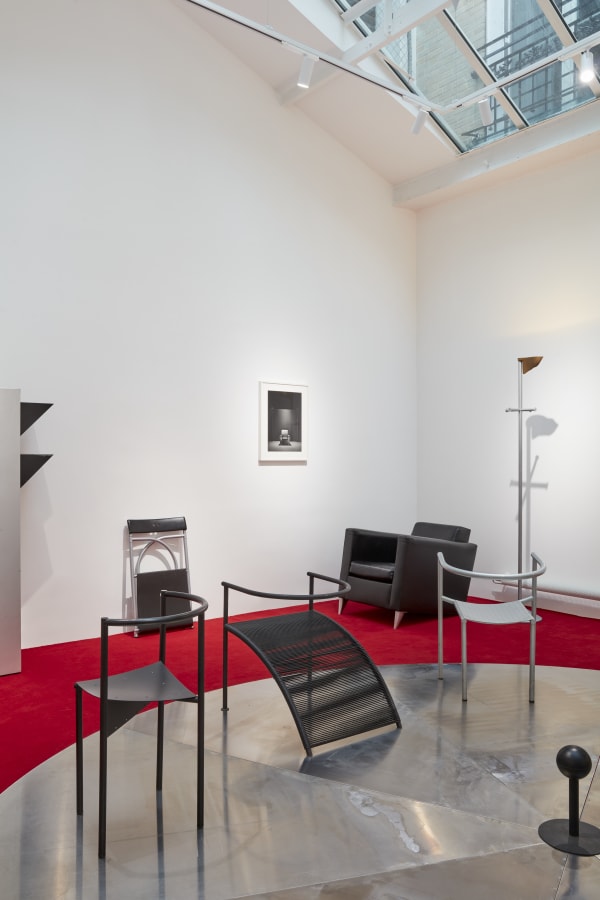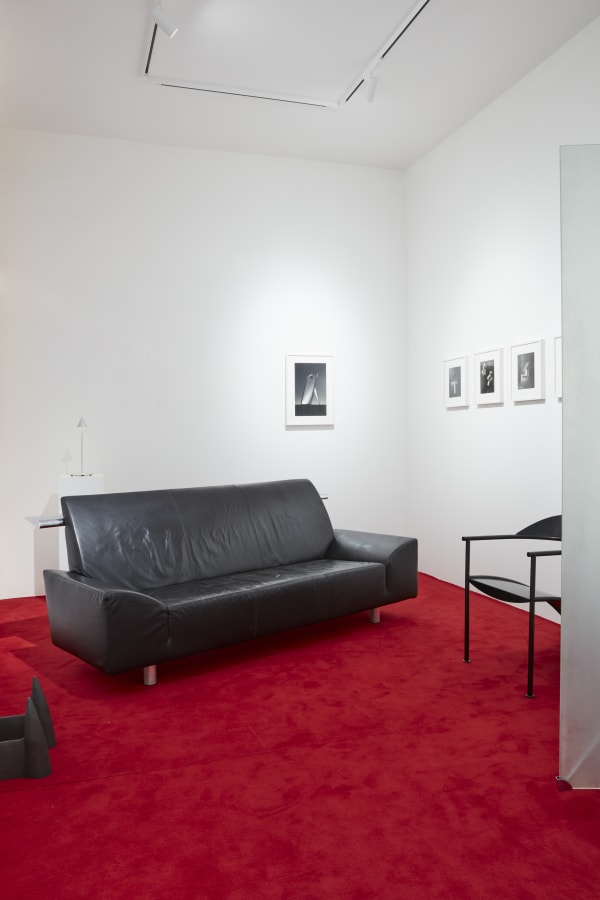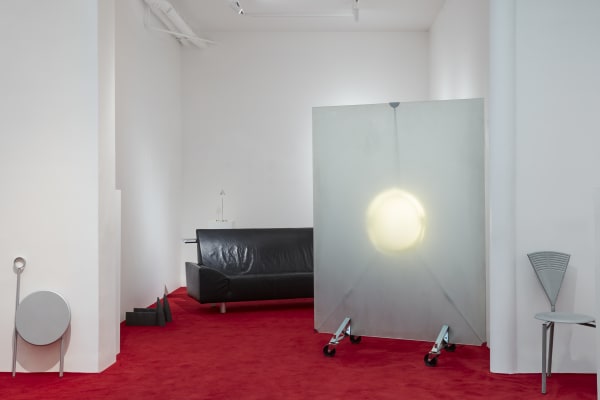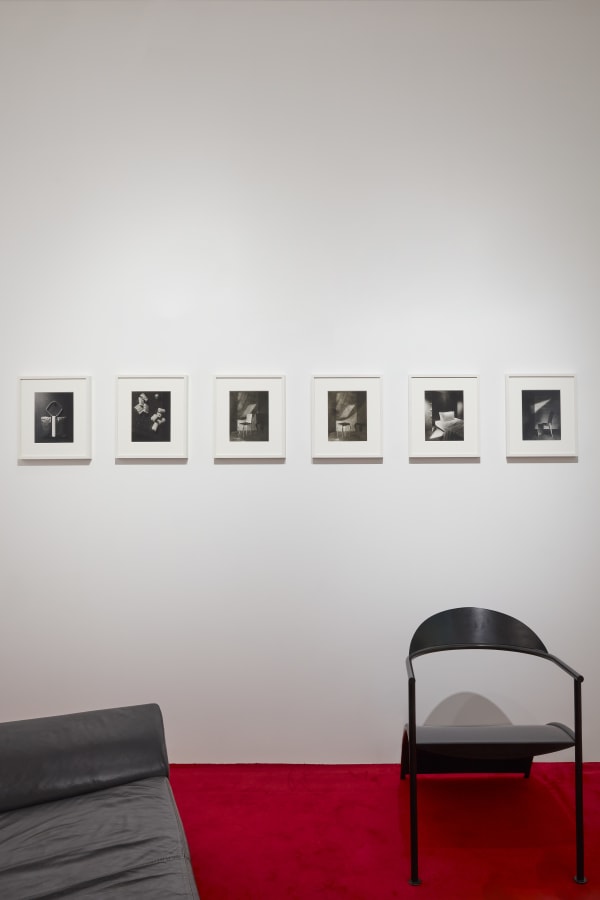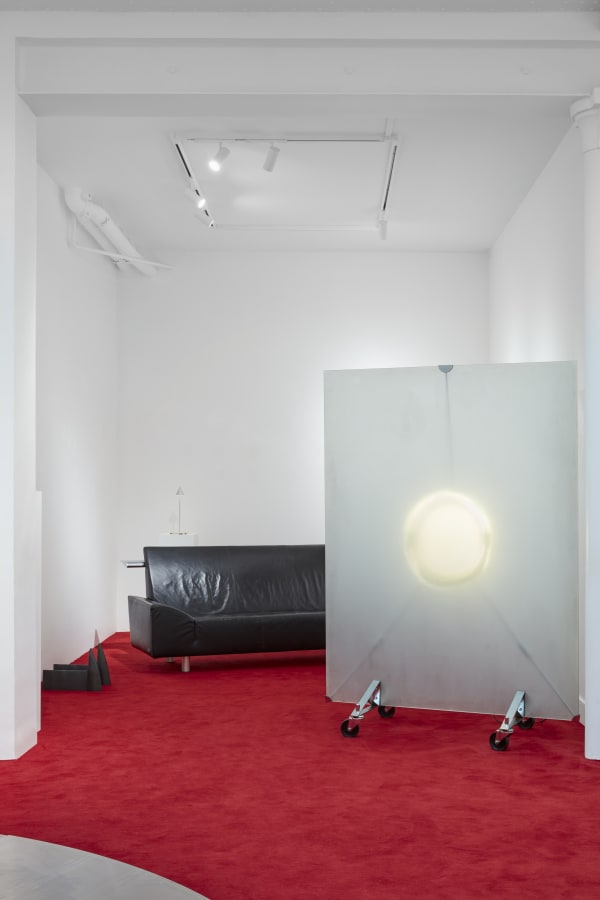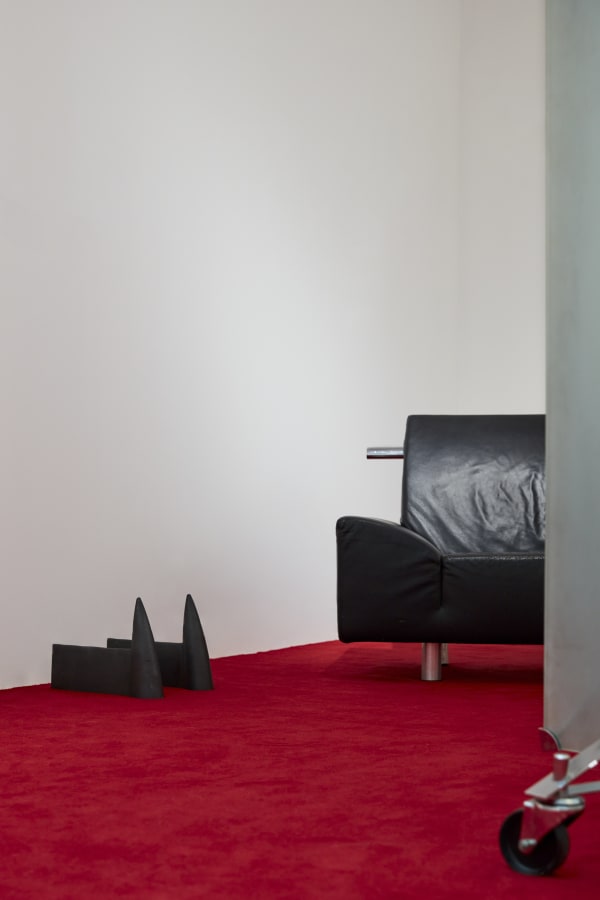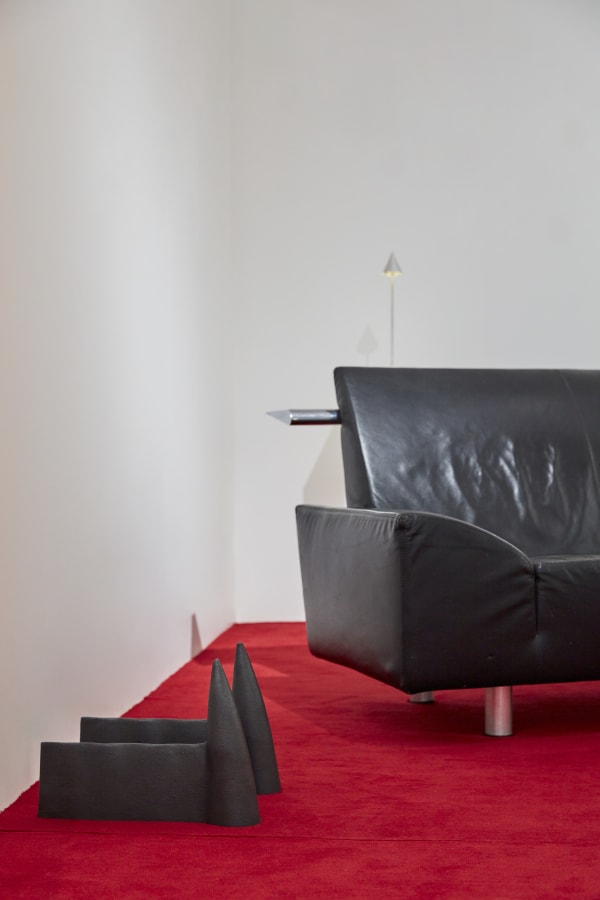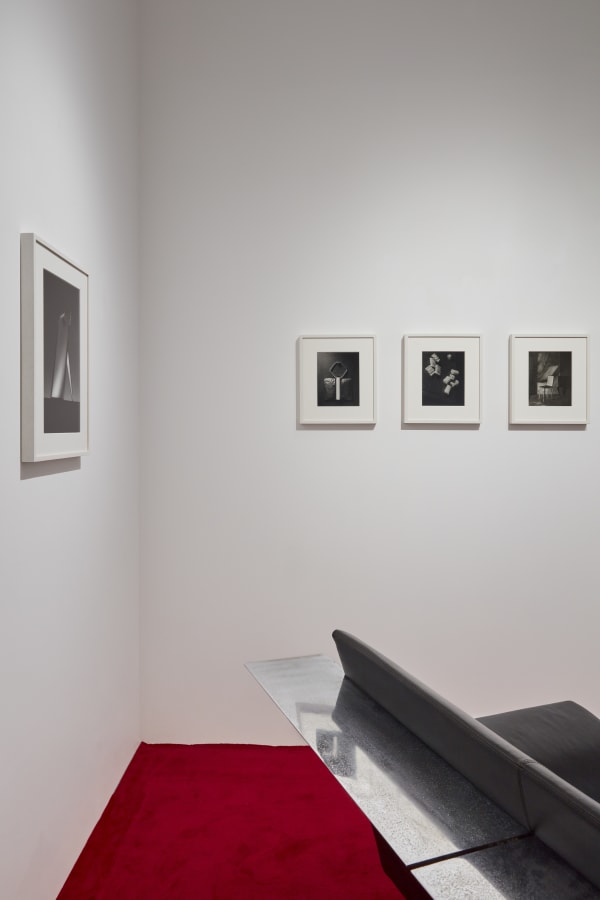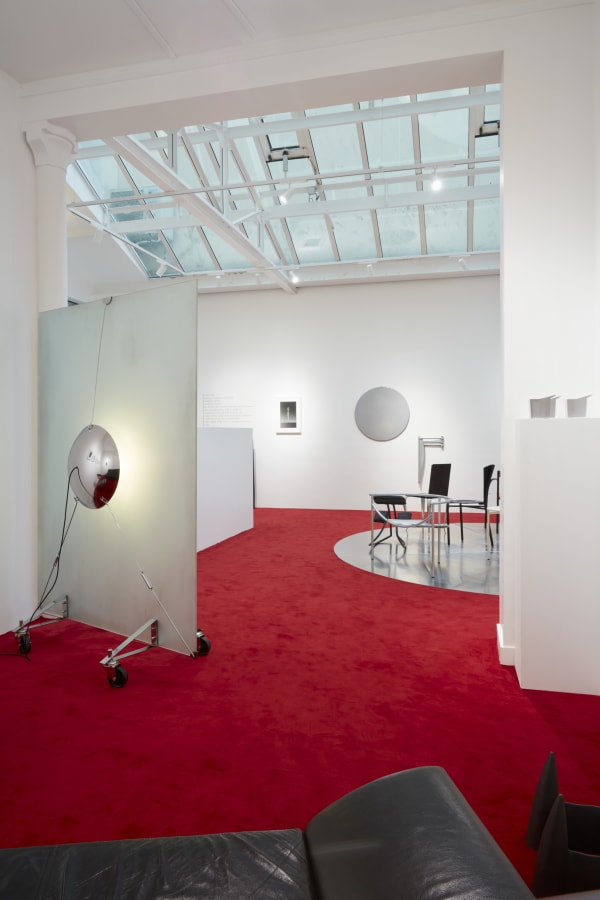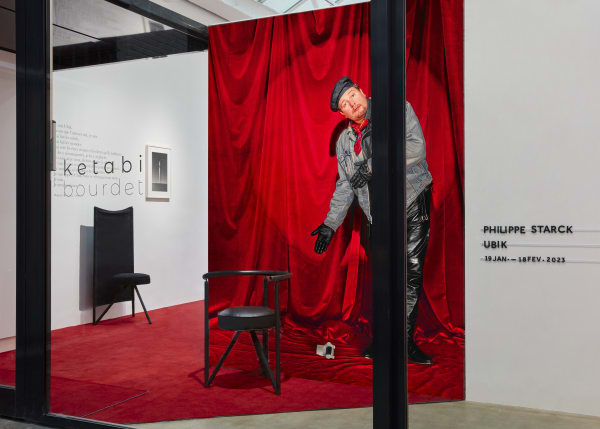Overview
Ketabi Bourdet est heureuse de présenter l’exposition Philippe Starck : Ubik, première retrospective du créateur à la galerie.
Tout le monde connaît Philippe Starck ! Lui qui a tout fait, des pâtes, des brosses à dents, des palaces, des avions, du riz, des megayachts, du parfum, des maisons préfabriquées, des biberons, des motos ou même des fusées. Désormais devenu designer superstar, mondialement connu et reconnu, il est partout. Il n’y a pas un pays dans lequel il ne soit pas présent, pas une grande ville qui ne compte pas au moins un hôtel ou un restaurant au décor signé Starck et pas un objet qu’il n’ait pas créé.
Lorsque l’on commence à s’intéresser au mobilier de Starck des années 1980, on est rapidement intrigué par les noms que portent les meubles et objets. Mickville, Stanton Mick, Wendy Wright, Titos Apostos, etc. Si l’on recherche sur Google certains d’entre eux, les résultats se révèlent encore plus énigmatiques. Pepper Young : héroïne d’une émission de radio américaine des années 30, Karl von Vogelsang : polémiste autrichien du XIXème siècle, Raymond Keith « Ray » Hollis : un politicien australien né en 1940. Il n’y a pas vraiment de logique et le mystère demeure entier. Les noms proviennent en fait du roman Ubik de Philip K. Dick. Starck est allé jusqu’à nommer son studio de design d’après le roman.
Dans le livre Starck Mobilier 1970-1987, on peut lire cette citation de Philippe Starck : « Mes meubles portent souvent des noms curieux… Ils sont tirés d’Ubik, un roman de Philippe K. Dick qui me fascine par sa très réelle intuition de la modernité. J’avais dit, et je crois que je vais m’en dédire, que j’arrêterais de créer des meubles quand j’aurais épuisé les noms contenus dans ce livre. Il n’en reste plus qu’un…». Philippe Starck puisait donc son inspiration dans l’œuvre d’un autre Philip, lui aussi maître en son domaine. Tout au long de la lecture du roman, du moins lorsque l’on connait le mobilier de Starck, le plus étonnant est d’imaginer, de visualiser tous ces meubles dont les noms sont omniprésents, en pleine action, interagir les uns avec les autres, lutter pour leur survie.
Une table se trouve ainsi dotée de pouvoirs télépathiques, un fauteuil fait office de vaisseau dernier cri, la station lunaire dans laquelle se déroule une partie de l’action porte le nom d’un guéridon pliant, etc. La schizophrénie de l’œuvre se retrouve ainsi poussée à son paroxysme et le génie de Starck pourrait être résumé à ce seul fait. A tel point que selon Christine Colin, « tout laisse à penser que Starck, designer, est né non pas en France mais en « Science-Fiction », avec Ubik... ». En lisant entre les lignes, le roman apparaît alors comme une sorte de manifeste du travail de Philippe Starck des années 80 et y apporte certaines clés de lecture. Ce sont en tout près de 60 pièces qui sont nommées d’après l’œuvre de l’écrivain et dont Starck a parfois légèrement modifié les noms, en changeant une lettre, le prénom ou même le sexe. Joe Chip devient ainsi Joe Ship, Sammy Mundo devient Lola Mundo, etc.
C’est donc à travers le prisme d’Ubik et une sélection de pièces dont les noms sont issus du roman éponyme, que cette exposition met en lumière le mobilier de Philippe Starck des années 1980. Un ouvrage sera publié à l’occasion de l’exposition.
A cette occasion, la galerie présentera par ailleurs un ensemble de tirages d’époques de photographies de meubles et objets de Philippe Starck par Tom Vack. Né au Etat-Unis en 1948, il vit et travaille entre Munich et Milan. Il est le plus important photographe de mobilier européen de la fin du XXème siècle.
Lorsque l’on commence à s’intéresser au mobilier de Starck des années 1980, on est rapidement intrigué par les noms que portent les meubles et objets. Mickville, Stanton Mick, Wendy Wright, Titos Apostos, etc. Si l’on recherche sur Google certains d’entre eux, les résultats se révèlent encore plus énigmatiques. Pepper Young : héroïne d’une émission de radio américaine des années 30, Karl von Vogelsang : polémiste autrichien du XIXème siècle, Raymond Keith « Ray » Hollis : un politicien australien né en 1940. Il n’y a pas vraiment de logique et le mystère demeure entier. Les noms proviennent en fait du roman Ubik de Philip K. Dick. Starck est allé jusqu’à nommer son studio de design d’après le roman.
Dans le livre Starck Mobilier 1970-1987, on peut lire cette citation de Philippe Starck : « Mes meubles portent souvent des noms curieux… Ils sont tirés d’Ubik, un roman de Philippe K. Dick qui me fascine par sa très réelle intuition de la modernité. J’avais dit, et je crois que je vais m’en dédire, que j’arrêterais de créer des meubles quand j’aurais épuisé les noms contenus dans ce livre. Il n’en reste plus qu’un…». Philippe Starck puisait donc son inspiration dans l’œuvre d’un autre Philip, lui aussi maître en son domaine. Tout au long de la lecture du roman, du moins lorsque l’on connait le mobilier de Starck, le plus étonnant est d’imaginer, de visualiser tous ces meubles dont les noms sont omniprésents, en pleine action, interagir les uns avec les autres, lutter pour leur survie.
Une table se trouve ainsi dotée de pouvoirs télépathiques, un fauteuil fait office de vaisseau dernier cri, la station lunaire dans laquelle se déroule une partie de l’action porte le nom d’un guéridon pliant, etc. La schizophrénie de l’œuvre se retrouve ainsi poussée à son paroxysme et le génie de Starck pourrait être résumé à ce seul fait. A tel point que selon Christine Colin, « tout laisse à penser que Starck, designer, est né non pas en France mais en « Science-Fiction », avec Ubik... ». En lisant entre les lignes, le roman apparaît alors comme une sorte de manifeste du travail de Philippe Starck des années 80 et y apporte certaines clés de lecture. Ce sont en tout près de 60 pièces qui sont nommées d’après l’œuvre de l’écrivain et dont Starck a parfois légèrement modifié les noms, en changeant une lettre, le prénom ou même le sexe. Joe Chip devient ainsi Joe Ship, Sammy Mundo devient Lola Mundo, etc.
C’est donc à travers le prisme d’Ubik et une sélection de pièces dont les noms sont issus du roman éponyme, que cette exposition met en lumière le mobilier de Philippe Starck des années 1980. Un ouvrage sera publié à l’occasion de l’exposition.
A cette occasion, la galerie présentera par ailleurs un ensemble de tirages d’époques de photographies de meubles et objets de Philippe Starck par Tom Vack. Né au Etat-Unis en 1948, il vit et travaille entre Munich et Milan. Il est le plus important photographe de mobilier européen de la fin du XXème siècle.
---
Ketabi Bourdet is pleased to present the exhibition Philippe Starck: Ubik, the first retrospective of the designer at the gallery. Everyone knows Philippe Starck! He has done everything from pasta, toothbrushes, palaces, airplanes, rice, megayachts, perfume, prefabricated houses, baby bottles, motorcycles and even rockets. Now a superstar designer, known and recognized worldwide, he is everywhere. There is not a country in which he is not present, not a big city that does not have at least one hotel or restaurant with a Starck decor, and not an object that he has not designed.
When you start looking at Starck’s furniture from the 1980s, you are quickly intrigued by the names the furniture and objects bear. Mickville, Stanton Mick, Wendy Wright, Titos Apostos, etc. If you Google some of them, the results are even more enigmatic. Pepper Young: heroine of an American radio show from the 1930s, Karl von Vogelsang: a 19th century Austrian polemicist, Raymond Keith «Ray» Hollis: an Australian politician born in 1940. There is no real logic and the mystery remains. The names actually come from the novel Ubik by Philip K. Dick. Starck went so far as to name his design studio after the novel.
In the book Starck Mobilier 1970-1987, we can read this quote from Philippe Starck: «My furniture often has curious names... They are taken from Ubik, a novel by Philip K. Dick which fascinates me by its very real intuition of modernity. I had said, and I think I’m going to deny it, that I would stop creating furniture when I had used all the names contained in this book. There is only one left...».
Philippe Starck thus drew his inspiration from the work of another Philip, also a master in his field. Throughout the reading of the novel, at least when you know Starck’s furniture, the most amazing thing is to imagine, to visualize all these pieces of furniture which names are omnipresent, in action, interacting with each other, fighting for their survival.
A table is thus endowed with telepathic powers, an armchair is used as a spaceship, the lunar station in which part of the action takes place is named after a folding table, etc. The schizophrenia of the work is thus pushed to its paroxysm and Starck’s genius could be summed up in this single fact. So much so that, according to Christine Colin, «Everything suggests that Starck, the designer, was born not in France but in «Science Fiction», with Ubik...». Reading between the lines, the novel appears as a kind of manifesto of Philippe Starck’s work in the 80s and provides certain keys to reading it. In all, nearly 60 pieces are named after the writer’s work and Starck has sometimes slightly modified the names, changing a letter, the first name or even the sex. Joe Chip becomes Joe Ship, Sammy Mundo becomes Lola Mundo, etc.
It is therefore through the prism of Ubik and a selection of pieces which names come from the novel by Philip K. Dick, that this exhibition highlights the furniture of Philippe Starck of the 80s. A book will be published by the gallery for the event.
On this occasion, the gallery will also present a set of vintage prints of photographs of Philippe Starck's furniture and objects by Tom Vack. Born in the United States in 1948, he lives and works between Munich and Milan. He is the most important European furniture photographer of the late 20th century.
When you start looking at Starck’s furniture from the 1980s, you are quickly intrigued by the names the furniture and objects bear. Mickville, Stanton Mick, Wendy Wright, Titos Apostos, etc. If you Google some of them, the results are even more enigmatic. Pepper Young: heroine of an American radio show from the 1930s, Karl von Vogelsang: a 19th century Austrian polemicist, Raymond Keith «Ray» Hollis: an Australian politician born in 1940. There is no real logic and the mystery remains. The names actually come from the novel Ubik by Philip K. Dick. Starck went so far as to name his design studio after the novel.
In the book Starck Mobilier 1970-1987, we can read this quote from Philippe Starck: «My furniture often has curious names... They are taken from Ubik, a novel by Philip K. Dick which fascinates me by its very real intuition of modernity. I had said, and I think I’m going to deny it, that I would stop creating furniture when I had used all the names contained in this book. There is only one left...».
Philippe Starck thus drew his inspiration from the work of another Philip, also a master in his field. Throughout the reading of the novel, at least when you know Starck’s furniture, the most amazing thing is to imagine, to visualize all these pieces of furniture which names are omnipresent, in action, interacting with each other, fighting for their survival.
A table is thus endowed with telepathic powers, an armchair is used as a spaceship, the lunar station in which part of the action takes place is named after a folding table, etc. The schizophrenia of the work is thus pushed to its paroxysm and Starck’s genius could be summed up in this single fact. So much so that, according to Christine Colin, «Everything suggests that Starck, the designer, was born not in France but in «Science Fiction», with Ubik...». Reading between the lines, the novel appears as a kind of manifesto of Philippe Starck’s work in the 80s and provides certain keys to reading it. In all, nearly 60 pieces are named after the writer’s work and Starck has sometimes slightly modified the names, changing a letter, the first name or even the sex. Joe Chip becomes Joe Ship, Sammy Mundo becomes Lola Mundo, etc.
It is therefore through the prism of Ubik and a selection of pieces which names come from the novel by Philip K. Dick, that this exhibition highlights the furniture of Philippe Starck of the 80s. A book will be published by the gallery for the event.
On this occasion, the gallery will also present a set of vintage prints of photographs of Philippe Starck's furniture and objects by Tom Vack. Born in the United States in 1948, he lives and works between Munich and Milan. He is the most important European furniture photographer of the late 20th century.
Works
-
 Chaise pliante Mrs. Frick
Chaise pliante Mrs. Frick -
 Armoire Fred Zafsky
Armoire Fred Zafsky -
 Canapé Prince de Fribourg et Treyer
Canapé Prince de Fribourg et Treyer -
 Chaise Francesca Spanish I
Chaise Francesca Spanish I -
 Cendrier Ray Hollis
Cendrier Ray Hollis -
 Paire de chaises Hashwood
Paire de chaises Hashwood -
 Chaise Miss Beasone
Chaise Miss Beasone -
 Philippe Starck, Chaise Lilla Hunter, Ca. 1988
Philippe Starck, Chaise Lilla Hunter, Ca. 1988 -
 Chaise Miss Wirt
Chaise Miss Wirt -
 Philippe Starck, Chaise pliante Mrs. Frick, Ca. 1985
Philippe Starck, Chaise pliante Mrs. Frick, Ca. 1985 -
 Philippe Starck, Chaise Miss Dorn, Ca. 1982
Philippe Starck, Chaise Miss Dorn, Ca. 1982 -
 Philippe Starck, Chaise Wendy Wright, Ca. 1986
Philippe Starck, Chaise Wendy Wright, Ca. 1986 -
 Chaise-table Lola Mundo
Chaise-table Lola Mundo -
 Philippe Starck, Fauteuil Dr. Sonderbar, Ca. 1983
Philippe Starck, Fauteuil Dr. Sonderbar, Ca. 1983 -
 Philippe Starck, Fauteuil Mister Bliss, Ca. 1982
Philippe Starck, Fauteuil Mister Bliss, Ca. 1982 -
 Fauteuil Pat Conley I
Fauteuil Pat Conley I -
 Philippe Starck, Fauteuil Pat Conley II, Ca. 1986
Philippe Starck, Fauteuil Pat Conley II, Ca. 1986 -
 Philippe Starck, Fauteuil Von Vogelsang, Ca. 1985
Philippe Starck, Fauteuil Von Vogelsang, Ca. 1985 -
 Philippe Starck, Guéridon Mickville, Ca. 1985
Philippe Starck, Guéridon Mickville, Ca. 1985 -
 Lampadaire portemanteaux Roi Egon Groat
Lampadaire portemanteaux Roi Egon Groat -
 Lampe Sandy Jesperson
Lampe Sandy Jesperson -
 Philippe Starck, Lampe Tamish, Ca. 1984
Philippe Starck, Lampe Tamish, Ca. 1984 -
 Paire de fauteuils Len Niggelman
Paire de fauteuils Len Niggelman -
 Paravent lumineux Stanton Mick
Paravent lumineux Stanton Mick -
 Philippe Starck, Prototype de chaise Francesca Spanish II, Ca. 1979
Philippe Starck, Prototype de chaise Francesca Spanish II, Ca. 1979 -
 Philippe Starck, Table basse Pepper Young, Ca. 1984
Philippe Starck, Table basse Pepper Young, Ca. 1984 -
 Table Joe Ship
Table Joe Ship -
 Table Nina Freed
Table Nina Freed -
 Philippe Starck, Table Titos Apostos, Ca. 1985
Philippe Starck, Table Titos Apostos, Ca. 1985 -
 Ed Archer
Ed Archer -
 Tom Vack, Lola Mundo Closed, 1988
Tom Vack, Lola Mundo Closed, 1988 -
 Lola Mundo Open
Lola Mundo Open -
 Miss Dona
Miss Dona -
 Tom Vack, Miss Zenzen, 1989
Tom Vack, Miss Zenzen, 1989 -
 Tom Vack, Pasta, 1988
Tom Vack, Pasta, 1988 -
 Tom Vack, Photographie Richard III, 1985
Tom Vack, Photographie Richard III, 1985 -
 Tom Vack, Shepard, 1988
Tom Vack, Shepard, 1988 -
 Tom Vack, Water Bag, 1988
Tom Vack, Water Bag, 1988
Installation Views
Press
-
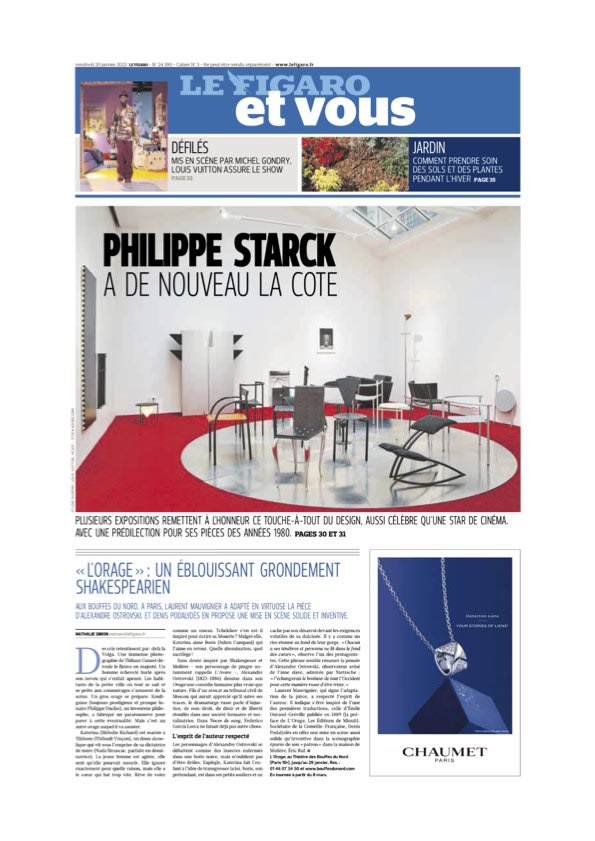
Philippe Starck a de nouveau la cote
Béatrice de Rochebouët , Le Figaro, 20 January 2023 This link opens in a new tab. -
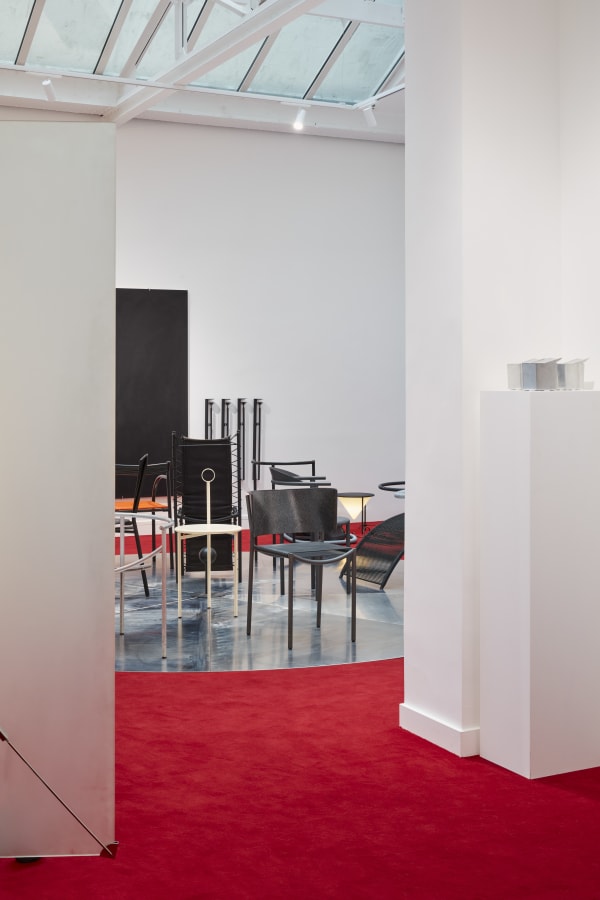
Philippe Starck : son mobilier clin d'œil à la science-fiction exposé à Paris
Anouk Sarfati, AD Magazine, 20 January 2023 This link opens in a new tab. -

Il fotografo e il designer Un passo a due nell’arte
Silvia Nani, Corriere della Sera, 21 January 2023 This link opens in a new tab. -

KETABI BOURDET PRESENTS ‘UBIK’, A RETROSPECTIVE OF PHILIPPE STARCK’S WORK
Rosa Bertoli, Wallpaper*, 24 January 2023 -
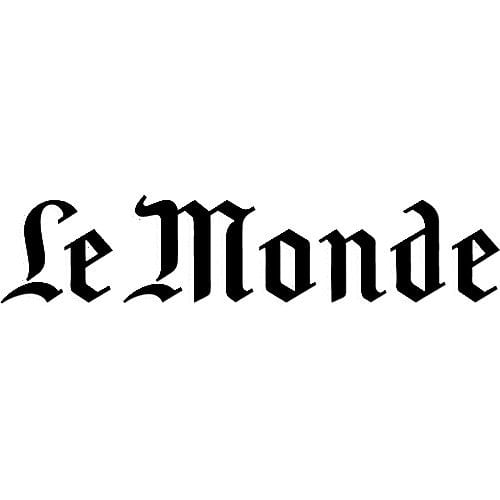
Philippe Starck et le don d’« ubikuité »
Véronique Lorelle, Le Monde, 25 January 2023 This link opens in a new tab. -

Starck et les années 1980
Emmanuelle Graffin, In Interiors, 26 January 2023 -
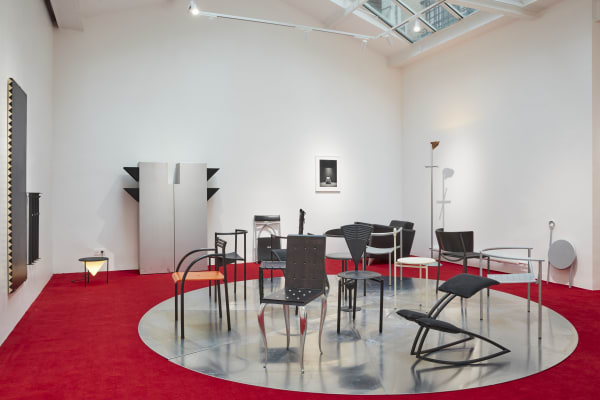
In a Philippe Starck Retrospective, The Designer’s Early Work Reads As Both Vintage and Prescient
Deborah Shapiro, Sight Unseen, 30 January 2023 -
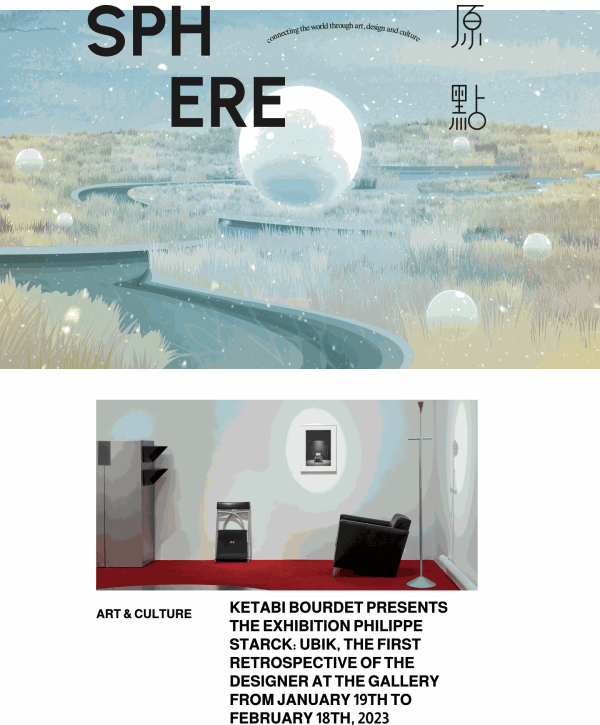
KETABI BOURDET PRESENTS THE EXHIBITION PHILIPPE STARCK
Emily Leung & Nikey Cheng, Sphere Art, 31 January 2023 -

« Ubik « et Starck, un design uchronien
Cécile Papapietro-Matsuda, Intramuros Paris, 16 February 2023 -

Philippe Starck : un marché du design en devenir
Judith Benhamou, Les Échos, 5 April 2023





